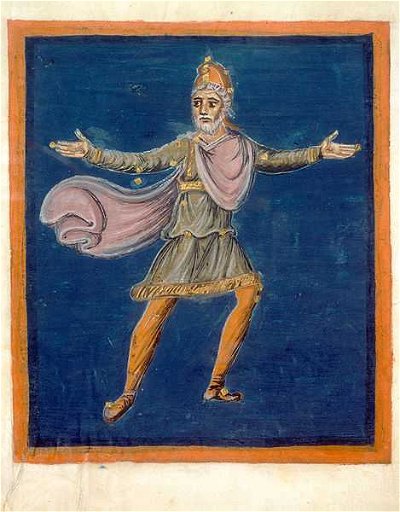18. Who was the queen of the Sumerian netherworld?
From Quiz The Personification of Death
Answer:
Ereshkigal
In Sumerian cosmology, the netherworld is the place the dead go when their lives are over, where they eat bread and drink water; (it is also the place where the sun and moon go when they are not overhead). The dead are judged by the gods, and their afterlife fates decreed according to the gods' desires. Utu, the sun, and Nanna, the moon both decree the fate of the dead when they are in the netherworld; in addition, the seven Annunaki (sometimes called the Annuna; both terms refer to the offspring of An but the Annuna may more properly be a set of "fifty great gods" not necessarily confined to the netherworld) are the seven "judges" of the dead. The netherworld is sometimes called by the name "Kur," which either refers to a great dragon whose body became the netherworld after it was slain by Enki, or to the living land itself, or to some variant or combination of these two. The chief personification of death in the Sumerian cosmology was Ereshkigal, who became the Queen of Death against her will. The older sister of Innanna, Ereshkigal was carried off by (or given to) Kur soon after the world came into being. There the dominion over the dead was thrust upon her; ultimately she definitely grew into the role. When Innanna goes to the underworld to witness the funeral rites of Gugalanna, the Bull of Heaven, Ereshkigal orders that Innanna be permitted entry to each of the seven gates of her dwelling; at each, Innanna loses an article of clothing, so that Innanna is naked by the time the sisters are face to face. Ereshkigal herself wears no clothing, and is demonic in appearance. The Annunaki pass judgment upon her, and Ereshkigal renders Innanna a corpse by directing a killing gaze upon her. (Innanna is later revived and freed when Dumuzi/Tammuz is set in her place.) This cycle is surely cognate with the Greek myth of Persephone, although the Greeks combined the elements of Ereshkigal's and Innanna's experiences into one girl's experience; this was probably appropriate since Innanna and Ereshkigal appear to be aspects of (or at the very least foils for) one another. (Innanna and the Annunaki are described above; Uttu is the goddess of weaving, textiles and clothing.)









 Quick Question
Quick Question